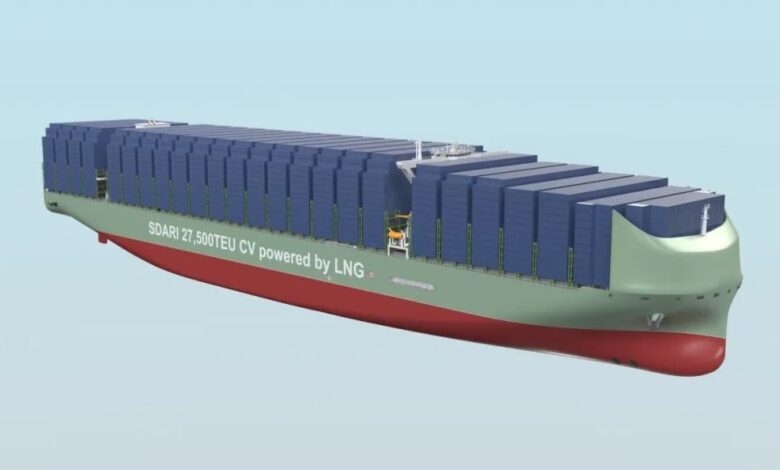While much of the rest of the liner world is favoring new ships that are sub-megamax, China continues to push the size envelope when it comes to the container trades.

Among the more headline-grabbing announcements coming out of SMM in Hamburg earlier this month, China State Shipbuilding Corporation’s (CSSC) Shanghai Ship Research and Design Institute received approval in principle for a 27,500 teu LNG dual-fuel containership (pictured), more than 3,000 teu larger in capacity than the existing biggest boxships afloat.
Elsewhere, the world’s largest port, Ningbo-Zhoushan, has just started construction of its latest berths, with the port revealing the two new facilities are being designed in order to accommodate 32,000 teu ships. To the south, Yantian, the eastern Shenzhen port, is also building new berths capable of handling 32,000 teu vessels.
Currently, Mediterranean Shipping Co (MSC) holds the mantle for the biggest containership in operation, taking delivery of a series of 24,346 teu ships last year.
The jumboisation of containerships has seen vessel capacities nearly quadruple in size this century. However, over the past year orders from global carriers have tended to be for ships in the 16,000 teu range, a more flexible size that can work across a range of tradelanes, rather than just the Asia-Europe route where today’s megamaxes are deployed.

